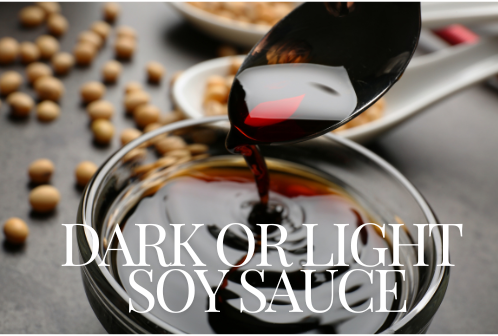Soy sauce is a staple in many kitchens, particularly those that explore the rich and diverse flavors of Asian cuisine. However, not all soy sauces are created equal. Among the most commonly used types are dark soy sauce and light soy sauce. Understanding the differences between these two can significantly enhance your culinary creations. In this guide, we’ll delve into the characteristics, uses, and benefits of dark and light soy sauces, and explore how different Asian cuisines incorporate them.
What is Soy Sauce?
Soy sauce is a fermented condiment made from soybeans, wheat, salt, and a fermenting agent. Its origins trace back over 2,500 years to ancient China. Today, it is a key ingredient in many dishes around the world, known for its umami flavor. Beyond China, soy sauce plays a crucial role in the culinary traditions of Japan, Korea, and other Asian countries, each with their unique variations and uses.
Dark Soy Sauce
Characteristics:
- Color and Texture: Dark soy sauce has a deep, rich color and a thicker consistency compared to light soy sauce.
- Flavor: It has a stronger, more robust flavor with a hint of sweetness due to the longer aging process and the addition of molasses or caramel.
- Uses: Dark soy sauce is commonly used to add color and depth to dishes. It’s a popular ingredient in marinades, braises, and stews. Its rich flavor makes it ideal for slow-cooked dishes, where it can fully infuse into the food.
Popular Dishes:
- Chinese Cuisine: Red-cooked Pork, a classic dish that uses dark soy sauce to achieve its signature deep red color.
- Japanese Cuisine: Dark soy sauce can be found in some richer, more robust dishes, although Japan primarily uses its own types of soy sauce, such as tamari.
- Korean Cuisine: In dishes like galbi (marinated beef short ribs), where the dark soy sauce adds a deep, savory note.
My favorite dark soy sauce: Buy Dark Soy Sauce
Light Soy Sauce
Characteristics:
- Color and Texture: Light soy sauce is lighter in color, usually a reddish-brown, and has a thinner consistency.
- Flavor: It has a saltier, more delicate flavor, making it perfect for seasoning dishes without overpowering the other ingredients.
- Uses: Light soy sauce is often used as a seasoning and dipping sauce. It’s ideal for dishes that require a subtle touch of soy sauce flavor, such as dumplings, soups, and stir-fries.
Popular Dishes:
- Chinese Cuisine: Fried Rice, A splash of light soy sauce can add the perfect amount of umami flavor without changing the color of the dish too much.
- Japanese Cuisine: Soy sauce is essential in sushi and sashimi dipping sauces, where light soy sauce’s delicate flavor complements fresh fish.
- Korean Cuisine: Used in making soups and light marinades, such as in the preparation of bulgogi (grilled marinated beef).
My go-to light soy sauce: Buy Light Soy Sauce
Low Sodium Soy Sauce
For those who are health-conscious or need to manage their sodium intake, low sodium soy sauce is an excellent alternative. It offers the same rich flavor with less salt.
My Preferred Low Sodium Option: Buy Low Sodium Soy Sauce
Japanese Soy Sauce
Japanese soy sauce, or shoyu, comes in several varieties, including usukuchi (light) and koikuchi (dark). Each type brings a unique flavor profile to Japanese dishes, from sushi to teriyaki.
My Top Choice for Japanese Soy Sauce: Buy Japanese Soy Sauce
Key Differences
- Aging Process: Dark soy sauce undergoes a longer fermentation process, resulting in a more complex and richer flavor profile.
- Ingredients: Dark soy sauce often contains added sugars like molasses, which contribute to its sweetness and thickness.
- Usage: Light soy sauce is used more for seasoning and as a condiment, while dark soy sauce is used for adding depth of flavor and color to cooked dishes.
Conclusion
Both dark and light soy sauces have their unique places in the kitchen. By understanding their differences, you can use each to its fullest potential, enhancing your dishes with the right balance of flavor and color. Whether you’re preparing a simple stir-fry or a complex stew, knowing when to use dark or light soy sauce can make all the difference.


